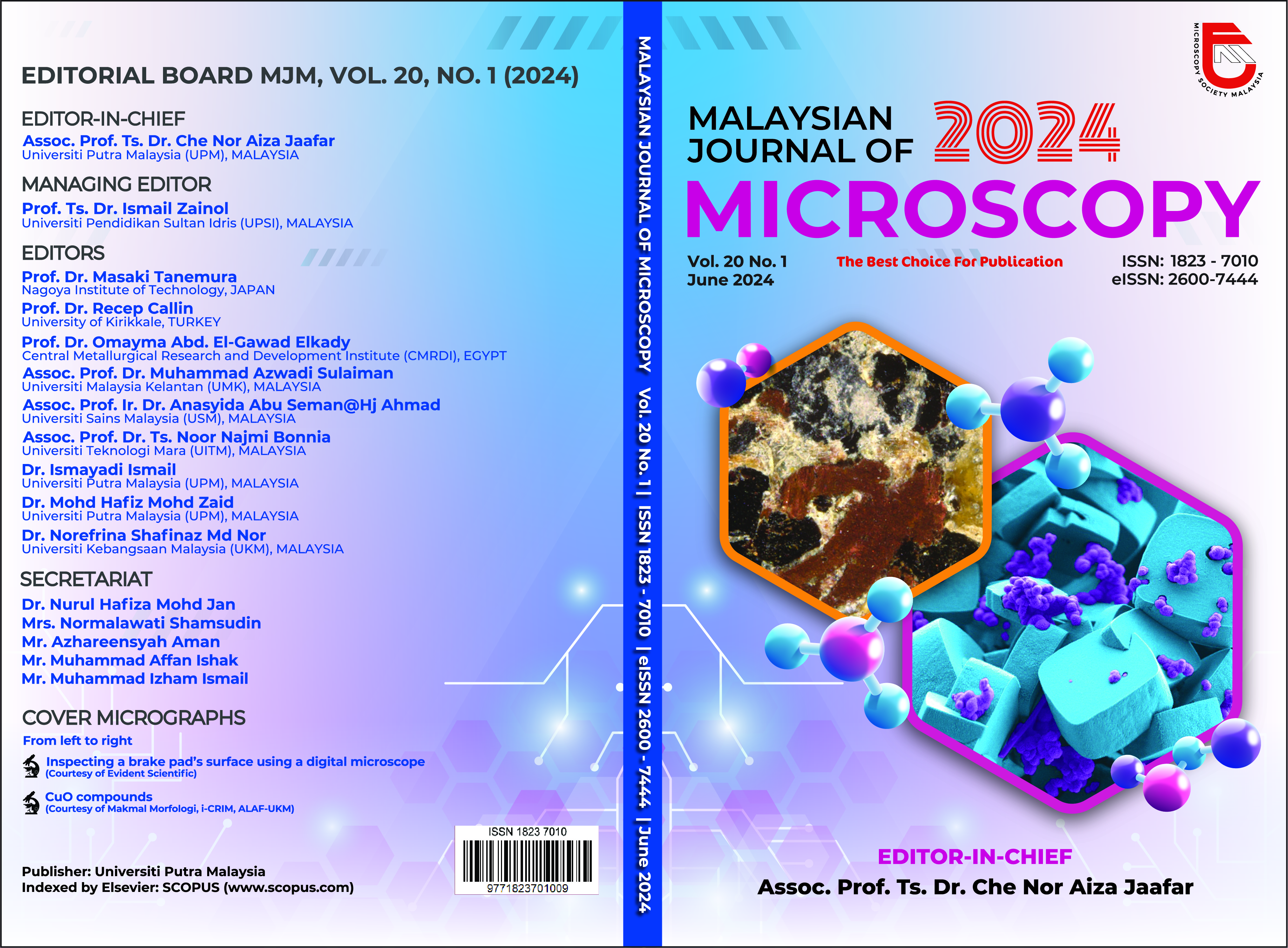PM2.5 AND COMPOSITION OF MICROBIAL AEROSOL FROM SELECTED BIOLOGY LABORATORIES IN A UNIVERSITY BUILDING
Abstract
Laboratories' air quality has an impact on employees' and students’ comfort and health. Particulate matter can be regarded as one of the most important and frequently encountered indoor air pollutants. This study aims to measure the concentrations of PM2.5, total bacterial counts (TBC) and total fungal counts (TFC), as well as the morphological structure of PM2.5 in selected laboratories at Level 2 and 3, Block 2, Faculty of Science and Mathematics, Sultan Azlan Shah Campus, UPSI. The data collection took place in three different laboratories. During the 8-hour sampling session, samples of PM2.5 were collected using a low-volume air sampler (LVS). In addition, airborne microorganisms were collected using a microbial sampler. The morphological structure of PM2.5 was also observed using the Field-Emission Scanning Electron Microscope (FESEM). Results revealed the average concentration of PM2.5 of 0.56 ± 0.24 μgm-3, with Lab A (biochemistry laboratory) exhibited the highest concentration (0.83 ± 0.04 μgm-3), followed by Lab B and C (microbiology laboratory). The mean values of the TBC for these three laboratories was 88.25 ± 7.81 cfu m-3 with the highest TBC recorded from Lab B (125.71 ± 13.86 cfu m-3). However, Lab C showed the highest value of TFC with 42.86 ± 4.58 cfu m-3. FESEM image revealed that the PM2.5 were of different shapes, and forms with morphologies ranging from rounded to prismatic with distinct geometric faces. As a result, the results obtained are in good values and still in the acceptance level. These amenities guarantee that all individuals inside the premises can work in a conducive environment for productivity, benefiting both present and future generations.


